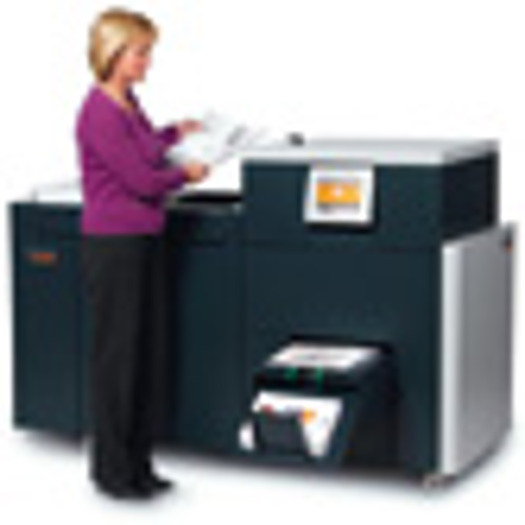"For mono machines, it’s now a must to have inline finishing," explains Lawrence. She adds that falling run lengths means getting your finishing done by a third-party supplier is fast-becoming less and less cost-effective and that colour printers are really beginning to embrace these inline technologies too.
"Traditionally, inline finishing slowed the machines down and people wanted to maintain machine speed. They can do that now as it can run on the fly."
It also means labour costs are lower, as it is an end-to-end solution, enabling, for example, one-touch bookletmaking.
Saddlestitching remains the most popular finishing product in this market, says Lawrence, but many are seeing the benefits of having a bookletmaker as well as a saddlestitcher, which can give really good results.
As with any investment, Lawrence says the first thing to look at is the total cost of ownership and the needs of your business. "People have been reluctant in the past to bring finishing in-house as there was a lot of training needed. Now, inline is done on the machine at the touch of a button, so you don’t need an extra operator and it is easier to learn to use," says Lawrence.
Online advantages
For envelopers and inserters, Simon Illingworth, marketing manager for direct mail at Pitney Bowes, says that the biggest change in DM has come from bringing the processes online. This has meant that it does not have to produce envelopes batch by batch, but it can be done, for example, by postcode. Envelopes batched by area can be despatched in a single mailbag, which can earn postage discounts. It also means less wastage too, according to Illingworth.
The other new trend has been for paper wrapping instead of traditional enveloping. There is a lot more room for printing on a paper wrapping, which is great for marketing and branding. Technology has also meant that a wrap can have a window patch, which makes it look more like an envelope. This moves it away from its association with ‘junk’ mail, which puts off many consumers.
WHAT'S NEW IN...
Inline digital finishing
- Oxfordshire-based The Flying Press installed the UK’s first DKT-200 trimmer to its existing Duplo System 5000 bookletmaker, resulting in an inline three-knife trimming solution in August. The firm has operated a business strategy of ‘continual upgrade’ of its bookletmakers over a period of 12 years starting with a DBM-100 in 1998
- Intelligent Finishing Systems unveiled a digital version of the Horizon StitchLiner at Ipex. The machine was shown working inline with printed reels fed via Hunkeler systems. The digital version of the machine features the new Horizon VAC-Turbo 80S PowerCollator delivery platform, which feeds sheets up to B3 on the long edge. This improves stability and increases operating speeds, claims the firm
- Watkiss launched its new PSQ200 PowerSquare Booklet Maker this year at Ipex with an average productivity increase on thin books of about 25%, rising up to 75% in some cases. To complement this, two new products for the PowerSquare were also premiered at this year’s show










